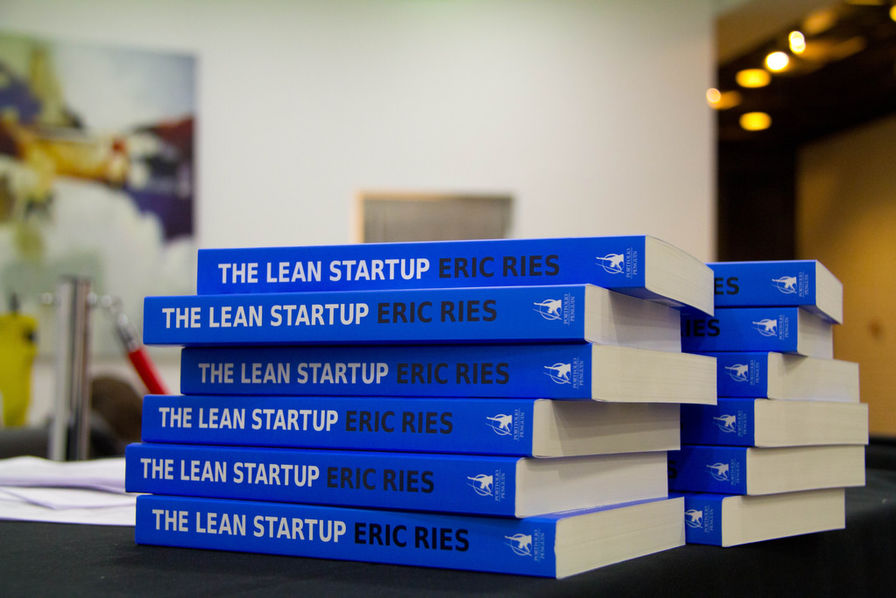Thought leadership article
Lean start-up, a new generation of strategic practice for a digital world
Quentin Bardet, Deputy CEO VISEO Digital, signs a forum on the Lean Startup and how to start this process effectively.
«The Lean Startup has evolved into a movement that is having a significant impact on how companies are built, funded and scaled.», Eric Ries, The Lean Startup, 2011
The corporate strategy has so far provided organizations with a clear framework for action, long-term objectives and time-bound planning to allocate the resources needed to build a sustainable competitive advantage. The elements underpinning these strategies were considered predictable: cost trends, competitive environment, relative position of firms. Based on studies and projections, the firm or its strategy firm could identify what confers certainty.
The digital age deprives us more and more of these comfortable trajectories: time seems to be accelerating, customers' expectations are volatile, their uses change and competition is enriched by new players with unpredictable behaviors. No one can claim to be free from "uberisation" of his value chain, from a radical change in the rules of the competitive game or from his demand. Our prediction capabilities are much more limited.
An approach based on personal experiences
From then on, the lessons of the American entrepreneur Eric Ries, the author of The Lean Startup (2011), resonate well beyond the world of small innovative technology company. He himself defines the start-up as an enterprise, whatever its size, which creates something new under conditions of extreme uncertainty: few companies and projects seem to be able to permanently escape this definition.
Ries developed his approach based on personal experience: after failing to launch his first company, Catalyst Recruiting, he joined as a software engineer There.com. This startup was able to mobilize considerable resources to ensure the success of its project: 200 employees, 5 years of R & D and 40 million investments. Yet in 2003, when it was launched, it was again a failure. The value proposition does not respond to a real market expectation, the intuition that justified all these efforts was not fair.
Strengthened by these formative experiences, Ries tackles his third entrepreneurial attempt, IMVU, with new principles that he formalized in a blog then resumed in his famous work. Subsequently, a series of authors will enrich and decline his approach on multiple dimensions (running lean, lean UX, lean analytics, lean customer development ...)
Development centered client new generation and systematic learning
The first principle is inspired by Steeve Blank, a professor at Stanford, who took part in the tour of his start-up and gave advice. Blank has promoted a new generation of "client-centered" development, with a watchword: getting out of the office (GOOB – get out of the building). A motto that allows to mobilize the techniques of the designer, the design thinking, to catch from the beginning the deep or latent needs of the customers and to afford a proposal of value which could meet a demand.
The second principle is about lean approaches: avoiding waste, in this case time and money, by short loops of experimentation and learning. Ries tells us that at the beginning of a project, the important thing is to accumulate as many teachings as possible, to experiment in a systematic way and to remove our own assumptions in order to give priority to an efficient plan, and not necessary to the original one, before exhausting our resources.
This approach is full of modesty: it brings down from his pedestal the visionary boss, the inspired strategist - prudent lucidity in this world full of unknowns.
Review its practice of the strategy and give rise to its strategy in action
To admit that one can no longer be right at the first go, to postulate that any strategy must as soon as possible confront the customer and be judged by the yardstick of a real market, undermines our strategy practices, the dichotomy between planning and execution.
If every effort is to be made to create a serious plan A, it is only after the testing of the small-scale vision that the long-term plan can emerge (product market fit).
If the strategy comes from action, it is also the typology of its partners that must be revisited. The firm, which rationally thinks of plans A by investing a lot of effort and intelligence in identifying trends and projecting a future image of the company without knowing to continue beyond, must be replaced by actors capable to do and think at the same time, to execute while remaining strategists. In other terms, know how to imagine strategic offers and related business models, but also know how to make samples to quickly judge them by market laws. Finally, we need to continuously analyze client feedback to make the strategy emerge in an iterative way. This new discipline seems to call actors with an ability to make, develop and organize short development cycles - in the technological field, agile actors. They will also have the ability to think, design the experimentation system and fluently analyze to understand its results - for example, "product management" will be used to designate this new ability to lead projects in order to bring out the right strategy.
As our certainties lose ground, there is a growing need to introduce these new actors and to introduce these practices widely. All the management committees must be inspired by this state of mind of the startup: with the digital, let us beware of plan A and let strategy emerge through action.


